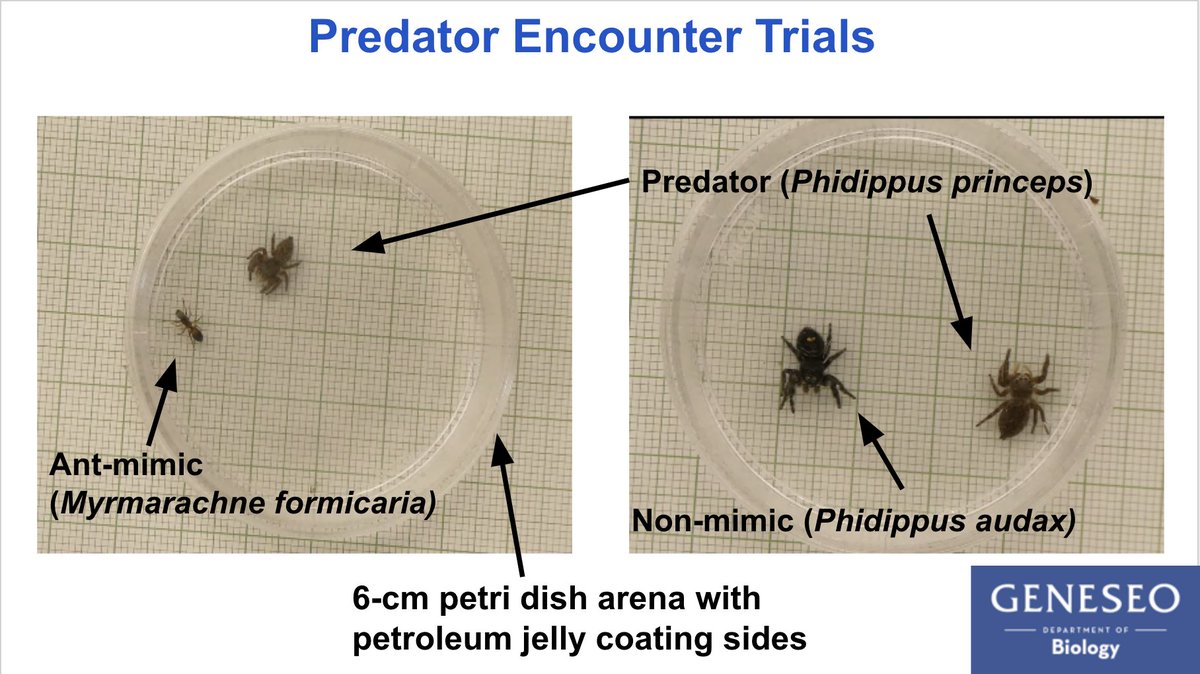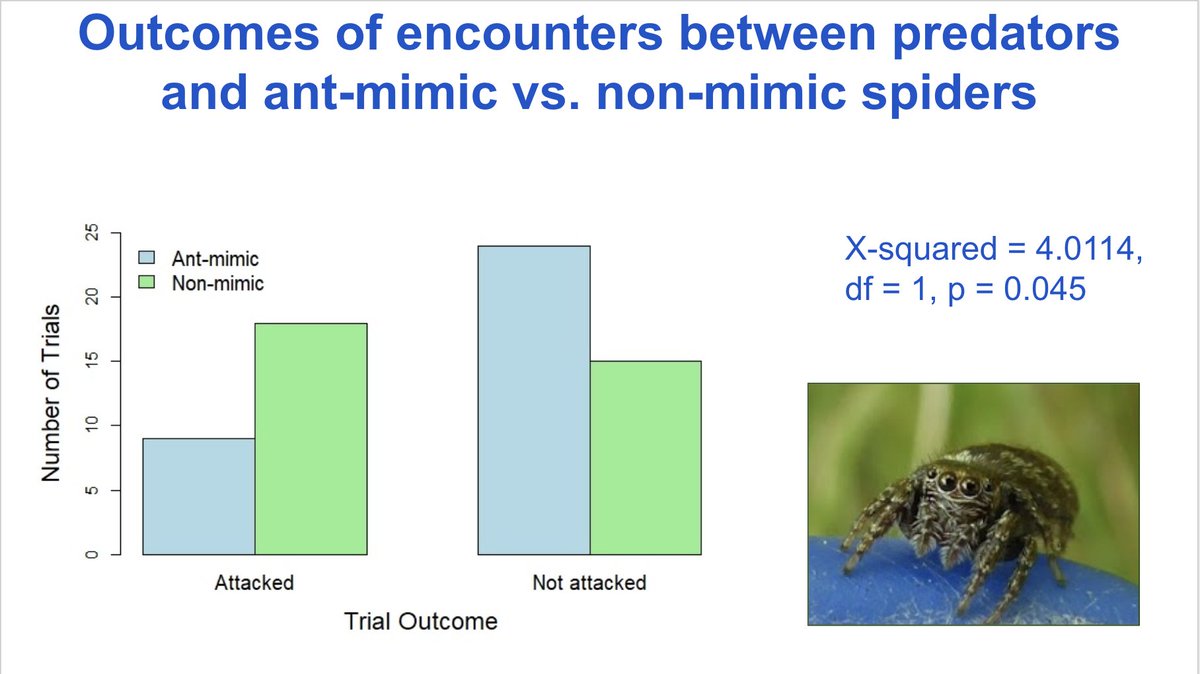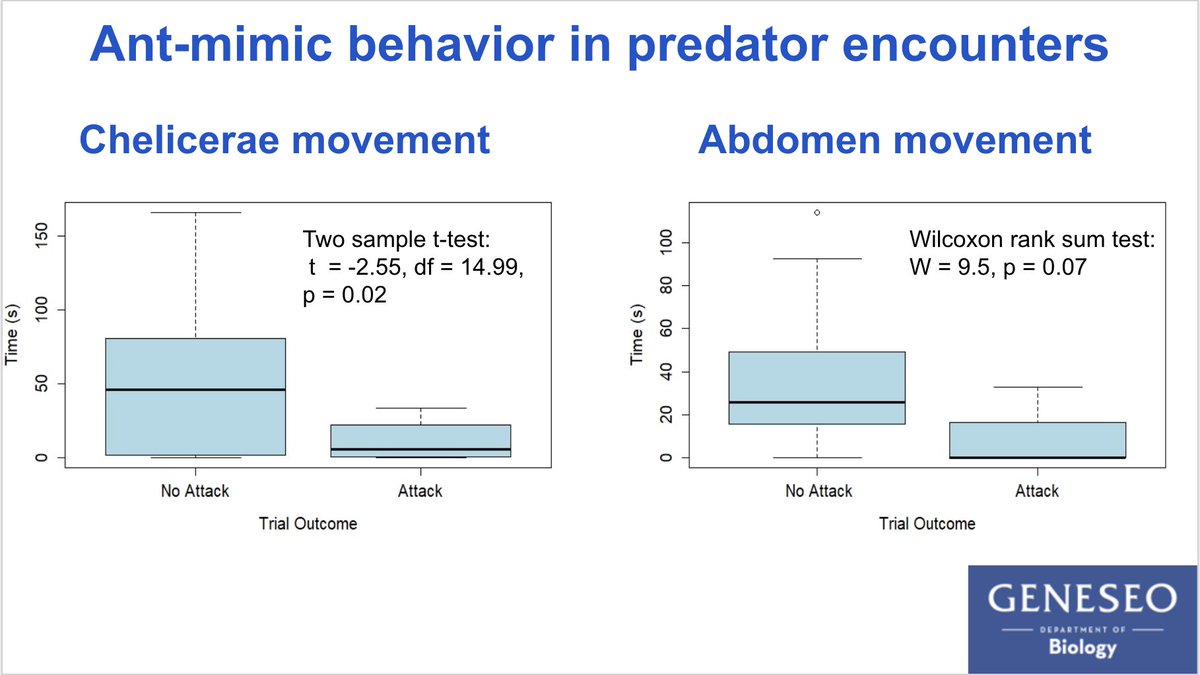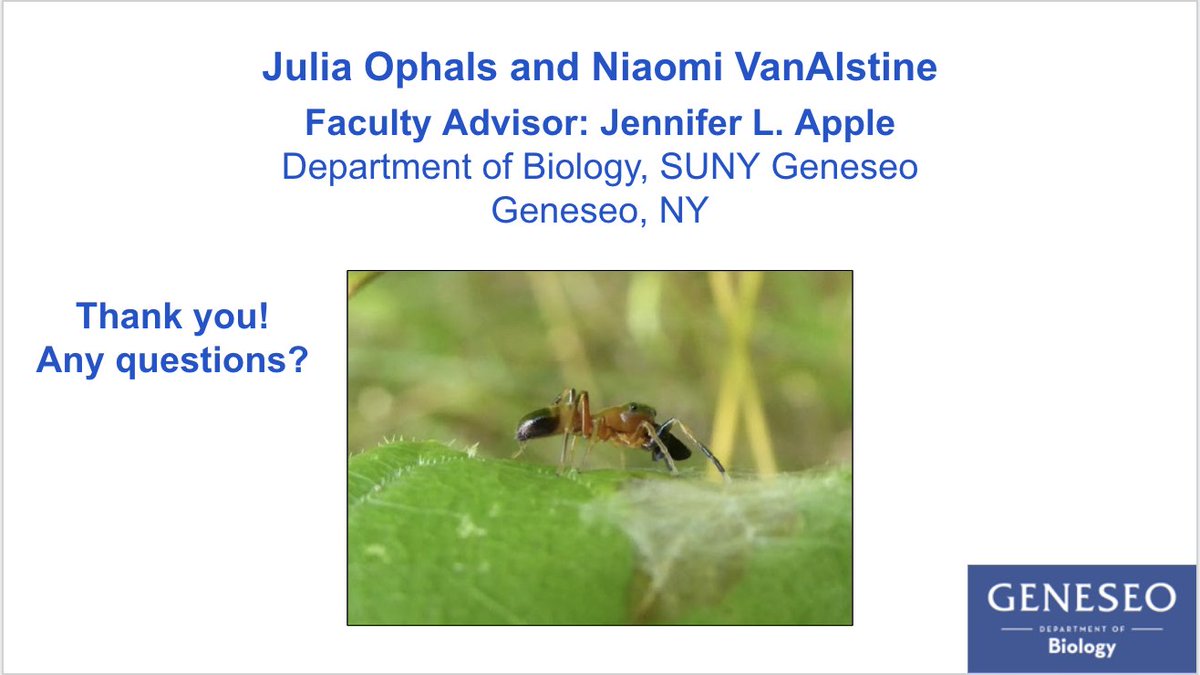1 #AnimBehav2021 Why look like an ant? Our goal was to assess the success of Batesian mimicry by the ant-mimicking spider Myrmarachne formicaria (Salticidae) in avoiding predation in staged encounters with another jumping spider that could be a potential predator.
2 #AnimBehav2021 We staged encounters between potential predators and the ant-mimicking spiders. These outcomes were compared to trials between these predators and another species of salticid spider which did not mimic ants. Trials lasted 4 minutes or until an attack occurred.
3 #AnimBehav2021 Results from the trial videos show that the ant-mimicking spiders are less likely to get attacked by the predators than the other spiders who do not mimic ants (χ² test of independence, p= 0.045).
4 #AnimBehav2021 Using BORIS event logging software, we scored the behavior of the ant-mimics like the bobbing of their abdomens and movement of their enlarged chelicerae (jaws). We tested whether ant-mimics that were not attacked exhibited a longer duration of these actions.
5 #AnimBehav2021 Ant-mimics that were not attacked exhibited a longer duration of chelicerae movement. We found no significant difference in abdomen movement between ant-mimics that were attacked or not. We have only analyzed half the trial videos so these data are preliminary.
6 #AnimBehav2021 Ant-mimics do seem to benefit from a lower incidence of attack. Whether it is a result of the spider’s appearance, behavior, or some other combination, further investigation is needed to understand the benefit that Batesian mimicry provides for these spiders.

 Read on Twitter
Read on Twitter





